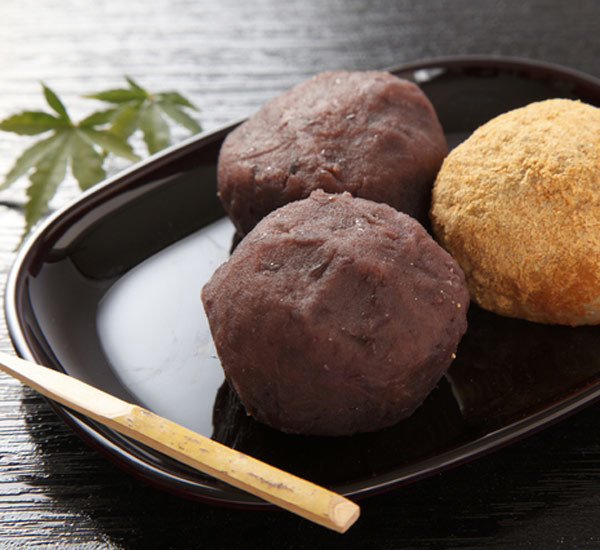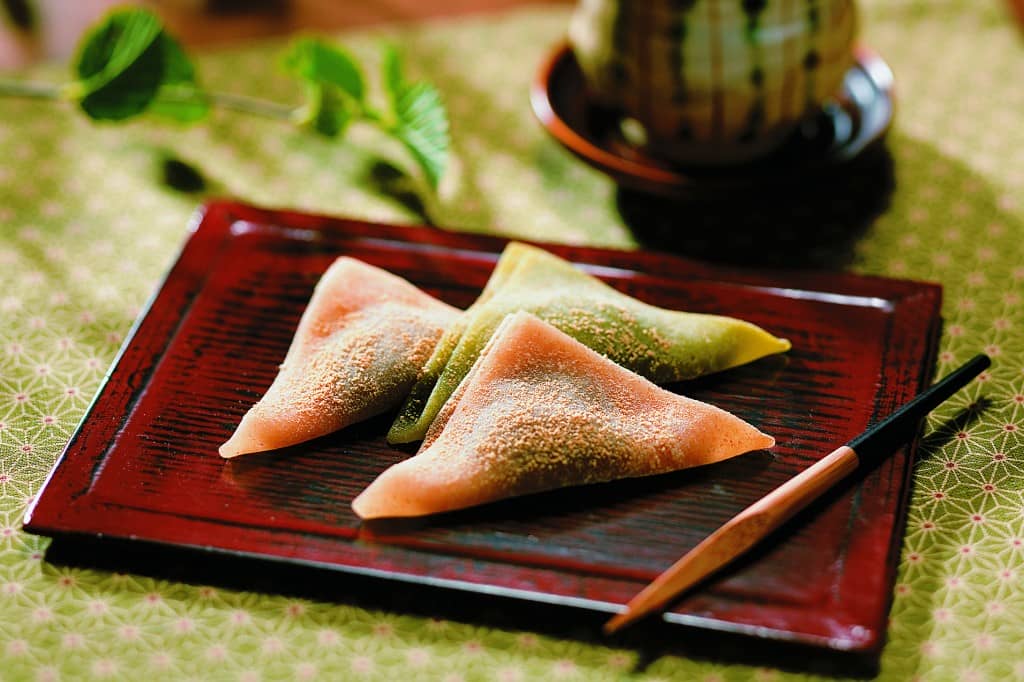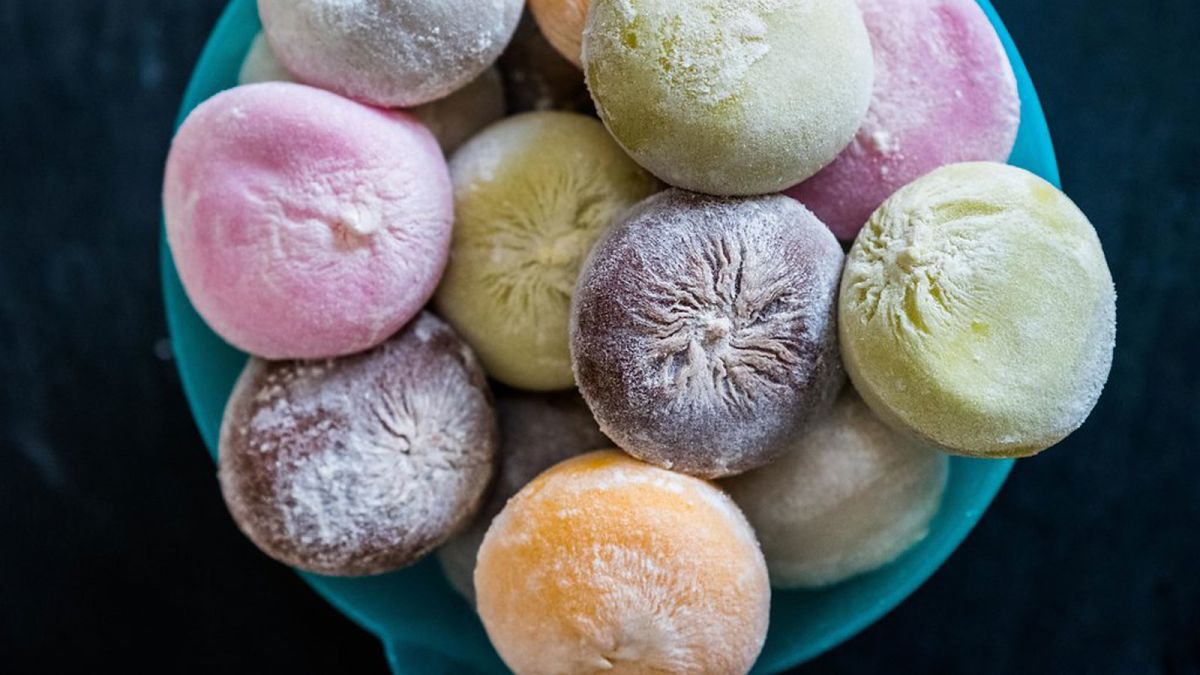Mochi is still considered to be an exotic sweet even though we are way more used to overseas stuff today than before.
However, tasting them in a cafe and keeping this dessert at home are two different things.
If you decide to buy some authentic mochi for yourself and have no idea of how to stock them to keep them delicious and soft, we can give you a couple of handy suggestions.
Storing Mochi. A Complete Guide For Newbies
Like with any rare or unusual stuff, dealing with the uncommon edible goodies can be often tricky. One never knows (and can never be absolutely sure) how to correctly store and sometimes even consume certain foodstuffs!
This is why, speaking of mochi, to begin with, let us briefly refresh what we know about this unusual dessert that is becoming more and more popular among the Western people.
So, basically, mochi is a sort of Japanese rice cake. Yep, that simple. But let us assure you, that is only the first impression!
These rice goodies are made of steamed white or glutinous rice, even though sometimes brown rice is also used.
Traditionally, mochi are shaped like small balls, sometimes with filling inside, and can be used in lots of different ways.
And if you are already curious about how many different variations of mochi use creative Japanese people managed to call into being, just check out the most common areas of use for this foodstuff:
- Mochi can be eaten as a sort of candy. In this case, they may contain sweet azuki paste which is made of sweet red beans, or they can be added to the sweet soups (yeah, there is a weird understanding of a dessert in Japan!).
- Mochi is also a staple in Japanese cuisine. They are widely consumed as an ingredient in soups, for instance.
- Moreover, it seems like creative Japanese folks decided to go beyond their limits, and so they included these round white rice balls into hot savory foods and even hot pot dishes!
- To surprise Europeans even more, mochi can be cooked in lots of different ways including grilling, baking, and frying. Who would think that simple rice cakes are so versatile?!
However, the most complicated part starts when the time comes to keep these goodies.
This is when people keep on asking themselves about how to store fresh mochi!
See, traditionally, mochi are supposed to be consumed freshly cooked since only then they remain soft and edible.
If we leave them out for twenty-four hours or more, we will end up with rocky hard stuff that can be called anything but delicious and enjoyable food.
So naturally, folks would like to know how to handle these demanding rice balls, and whether there is any difference between the way of keeping homemade mochi and the way we would store mochi that were bought in a supermarket.
Mochi storage step by step
- First of all, does freshly made mochi need to be refrigerated? The answer is simple, and it is no. Never place them into your refrigerator for God’s sake! Cold will do the same bad job as air and it will turn our soft, pliable, and tasty rice balls into stones. Not the kind of alchemy one would like to experience, we suppose!
- Second, fresh mochi must be eaten at once or the latest in the evening on the day they were prepared. If left for longer, they will get dry and hard, but the worst thing is that they tend to get moldy too fast.
- It is, however, possible to find mochi that are pre-packed and are being sold in cartons, but those are already hard and are meant for the cooking purposes, such as grilling, stir-frying, or boiling. But these ones can go to the fridge which is good news for the home chefs.
- Some say that homemade mochi can be refrigerated if packed tightly in a plastic film and sealed in a tank that is hermetic.

But above all this, there is one way we shall never use to keep freshly cooked mochi edible, and that is to freeze them. Cold will destroy the flavor and the delicate texture ruining the whole foodstuff.
Nevertheless, if you need to preserve some commercially made and pre-packed rice cakes, it is OK to just quickly shove the package with the rice balls into the frosting camera until you are ready to cook them.
The good thing about freezing mochi (and we know everyone will appreciate it!)
is that this foodstuff needs no thawing prior to being cooked.
And don’t worry, these delicate rice yummies will not turn into ice while chilling in your freezer!
How to Store Homemade Mochi
The hardest thing about handling these sticky homemade rice cakes is how to keep mochi soft. As you already know, they have a bad habit of getting hard and moldy within just a couple of days, so one needs to be really careful when keeping them.
If you bought or made fresh mochi, try to eat them on the day they were cooked.
This is the optimal choice since like that, you will be able to enjoy their taste and unforgettable texture to the fullest!
However, if, for some reason, some mochi you purchased are still left untouched, we would recommend freezing them.
Homemade foodstuff, however, needs to be either chilled or discarded.
How Long Does Mochi Last?
How long does mochi last? As it comes from all we said above, their lifespan is far from being long. Usually, freshly made rice cakes will last for a day or two if we let them sit out. In the freezer, however, their durability will significantly increase, but this option is only available for mochi that are commercially produced.
To make things clear, check out the shelf life chart below to see how much time will mochi stay consumable under different conditions.
[table id=103 /]
There is one more point of concern that bothers mochi lovers very much: how long does mochi ice cream last?
Yes, you got it right, those rice balls can even contain ice cream as a filling!
And actually, its lifespan is somewhat longer than of the common counterparts.
If you buy or make such an ice cream, it can be safely kept frozen for a week.
How to Tell Mochi Is Bad
Since storing mochi is quite tricky stuff, it is good to know how we can define that something went wrong and our rice cakes are getting worse.
Fortunately, like any other foodstuff, mochi have the same signs of spoilage and deterioration:
- mold
- hardness
- dryness
All these symptoms show that rice yummies are most likely not edible anymore, and must be thrown away.
Types Of Mochi

Mochi would not be a traditional Japanese dessert and foodstuff if they didn’t have a wide variety of unusual forms and shapes.
When Europeans hear of mochi, they usually imagine simple white rice balls, sometimes with some sweetened filling inside, or covered with a sweet soy sauce.
However, the reality is way more interesting!
https://youtu.be/GhTRA7pOVwA
If you ever decide to try this foodstuff, feel free to make use of the list of mochi types we prepared for you, our brave and curious friends!
Daifuku

This kind of mochi is big and round and contains sweet red bean paste inside. However, modernized recipes may include strawberry filling as well.
Ohagi

This one is like a daifuku turned inside out: the sweet filling covers the white rice center.
Kinako

Kinako mochi is served freshly cooked being generously sprinkled with sweetened soybean powder called kinako.
Kiri mochi

This sort of rice cakes have rectangular and flat shape and white color, and can be used in various cooking recipes.
Kusa mochi

This green mochi served in spring is made of mugwort with some red bean paste inside, and has a significant leafy aroma.
Yatsuhashi

These traditional mochis from Kyoto look like green triangulars. They have layered texture with all sorts of filling, but usually you will find them with cinnamon.
Sakura mochi

This one is usually served during the sakura blossom period. This rice cake is pink and round, with the addition or red bean paste, extra sweet, and it’s served being wrapped in a salted sakura leaf.
The leaf is also edible, by the way!
Dango

This sort of rice balls is sold in a set of three being pierced with a stick. Sometimes they can be poured with the sweet soy sauce.
Warabi mochi

Made from bracken starch, this mochi variation is jelly-like and semi-translucent. Served with soybean powder and sometimes additionally drizzled with black sugar syrup.
Hishi mochi

It’s hard to not recognize it! Three-layered rhombus-shaped rice cakes of white, green, and pink are usually sold during the Girls’ Day celebrations in Japan and symbolize fertility and health.
Mizu Shingen

This mochi will surprise anyone!
A large, jelly-like, and completely transparent sphere made of agar-agar powder has a strong resemblance to a raindrop. It is often flavored with some sugary syrup or nutty soybean powder.
There is only one thing that we would like to warn you about regarding mochi, and this is all about their stickiness.
No matter how this foodstuff is supposed to be eaten, as a dessert or as a regular dish, mochi is still made of sticky rice, especially when it comes to warabi mochi and dango.
For this reason, mochi are often served with various sauces or powder to make it simpler to chew and swallow them.
In Japan, it sometimes happens that people suffocate after eating mochi as they are with no sauce in addition.
So if you decide to buy this goodie or make it yourself, make sure you have something to make mochi come down your gullet smoothly.
So now you know what mochi are, how to store mochi, and what to avoid to be able to enjoy this unusual dessert.
Besides, since this foodstuff is pretty versatile in terms of use, it gives certain freedom to experiment.
Make use of our suggestions, remember safety rules, and you will see that storing mochi is not that difficult.
[wp-faq-schema title=”Frequently Asked Questions”]

How to store sweet mochi? Is it any different from keeping unsweetened ones?
Hi! I used to keep mine refrigerated and it worked well. Only don’t leave them there for too long, or they’ll harden! But mochi ice cream, of course, must go to the freezer.
Hey! I’m new to this mochi theme, so maybe some of you know how to store mochi before it hardens?
Hello! I only know that it can be refrigerated (at least the commercially made ones or those cooked in dishes) or frozen (e.g. mochi ice cream). I guess that’s the only way.
Hi everyone! I do need your help people! How to store mochi cake? Did anyone have to deal with that before? Thanks for any ideas!
If you mean mochi as they are, then refrigerate them (if they’re not freshly made). But if you meant a normal cake made of rice flour that is not actually mochi, then I guess it also has to be wrapped and chilled.
How to store mochi with filling? If I chill it, won’t the inside harden?
It will harden anyway, I suppose, since that’s how it is with this stuff. I keep mochi refrigerated when I buy them, but I try to eat them a couple of days after purchase so I had no chance to see what’ll happen to the filling.
Did anyone bake mochi before? How to store baked mochi?
I know that it’s fine to leave them out for a few days, or you can refrigerate them.